When first proposed in 1819, the Hoosac Tunnel seemed so logical. It would provide an efficient and direct route for the Boston and Albany Railroad, whose pathway meandered 20 miles along precipitous grades. Early proponents, however, could not have imagined that blasting a 4.75 mile tunnel through the Hoosac Mountain would require over 20 years of labor. The project took so long to complete that it was commonly referred to as "The Great Bore."
Civil
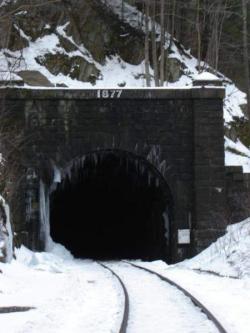
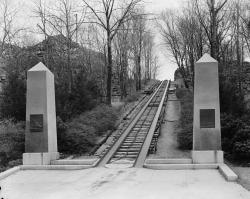
The Granite Railway Company of Quincy was the first commercial railway in the United States. Incorporated in 1826 and designed by Gridley Bryant, the railway relied on horses, rather than steam locomotives, to draw the cars along the tracks. Its primary purpose was to transport granite from Quincy to build the Bunker Hill Monument.
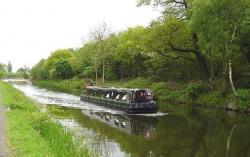
It took 22 years to complete the 35-mile waterway, as funding problems caused the work to shut down from 1777 to 1785.
The notion of creating a canal that crossed Scotland was conceived in the 17th century during the reign of Charles II, but would not be realized for nearly 100 years. The Forth and Clyde Canal, known as The Great Canal in its early years, was the first major transportation project in Scotland and the world's first man-made, sea-to-sea ship canal.
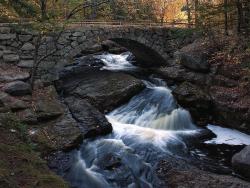
"Some of New Hampshire's most aesthetically pleasing yet least appreciated structures are stone arch bridges."
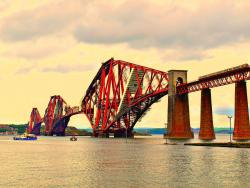
"The majestic Forth Bridge ... symbolises the tremendous achievements of Victorian engineers and the immense strides made in the technique of bridge design and construction since the dawn of the Railway Age..."
- Derrick Bennett, Bridges: Great Buildings of the World
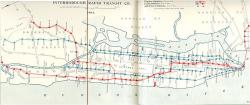
In the 19th century, New York City was a burgeoning industrial and commercial metropolis - the largest city in the United States and second largest in the world. As the city's population increased, people began to call for construction of an underground railway. Many unusual engineering challenges had to be overcome, not the least of which was construction in a dense urban area. After lengthy legal battles over property rights and the debt limit of the city, ground was broken on March 24, 1900.
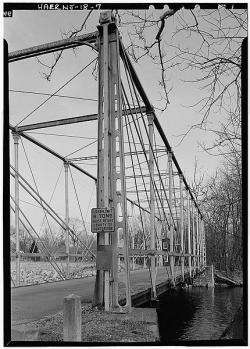
"Fink's truss design was one of a number of early patented solutions to [the problem of how] to carry a massive, moving weight (a train) over long spans (to avoid the expense of building piers and obstructing waterways) on easily erected bridges (often in rough terrain) with good long-term economy..."
- Kent Farnow Smith, "America's Oldest Functioning Iron-Truss Bridge," 1978
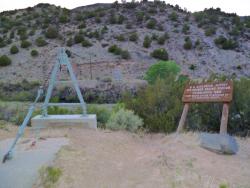
A tiny village on the Rio Grande River in northern New Mexico became the training center for the first American hydrographers and provided the first stream-gauging operations of the U.S. Geological Survey. To plan any water system, it is necessary to know the amount of water flowing in the stream or river at all times - including low, normal, and flood conditions.
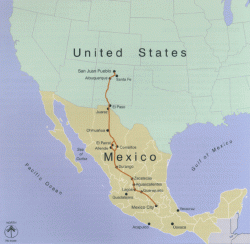
El Camino Real (literally, "the royal road") is the oldest and longest historical trail in the Western Hemisphere. The transportation link has, through the centuries, been called various names, including El Camino Real de Tierra Adentro (literally, "the road to the interior" because the U.S. frontier was seen as the country interior to Mexico), the King's Highway and the Royal Highway. It became a transportation lifeline that helped integrate Spanish and European culture in the Southwestern U.S.
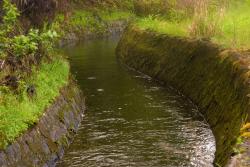
The East Maui Irrigation System is Hawaii's most dramatic water story. It began with the construction of the Old Hamakua Ditch built between 1876 and 1878. This privately financed, constructed and managed irrigation system was one of the largest in the United States. It eventually included 50 miles of tunnels; 24 miles of open ditches, inverted siphons and flumes; incorporates approximately 400 intakes and 8 reservoirs.
Innovations
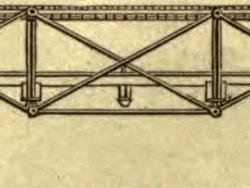
The Fink Deck Truss Bridge is thought to have been originally used on the Norfolk and Western mainline railway. It was moved to its present location and converted to a vehicular bridge over a railroad spur in 1893 when the Norfolk and Western mainline was moved. It was relocated again in 1985 to…
Read More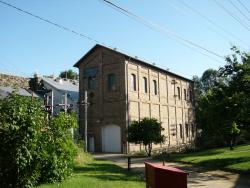
The historic Folsom Power House #1 marks one of the first successful uses of hydroelectric power in the world and the first successful transmission of power long distance (twenty-two miles to Sacramento). The old Folsom Power House still shelters the machinery generated to drive streetcars and…
Read More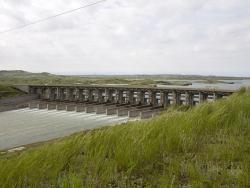
The Fort Peck Dam was a cornerstone project of the Works Progress Administration of Franklin D. Roosevelt's New Deal. It required the largest construction plant and workforce since the construction of the Panama Canal and peaked at 11,000 workers. It was the largest dam of any type in the world…
Read More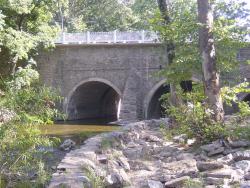
"For 273 years, the little stone bridge that carries Frankford Ave. across Pennypack Creek has been doing its humble job with a minimum of attention..."
- Gerald McKelvey, The Philadelphia Inquirer, September 16, 1970
Built more than a century before the reign of Napoleon,…
Read More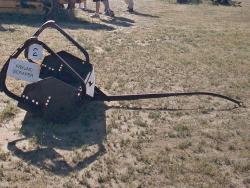
The Fresno scraper established the basis for the modern earthmoving scraper, being able to scrape and move a load of soil, then discharge it at a controlled depth. It quadrupled the productivity of manual labor, replacing hand shoveling of earth into horse carts.
James Porteous, a…
Read More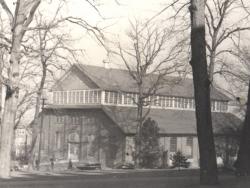
In 1907, John Fritz, known as the "Father of the Steel Industry in the United States," rejoined the Lehigh University Board of Trustees after an absence of a decade. He began the development of what would prove to be his greatest gift to Lehigh: a modern engineering laboratory and funding for…
Read More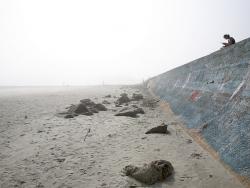
Galveston Island is a barrier island located two miles off the Texas coast. The island is about 3 miles wide at its widest and about 28 miles long. The Galveston Seawall extends over 10 miles along Galveston's oceanfront, protecting life and property against hurricanes and tropical storms. …
Read More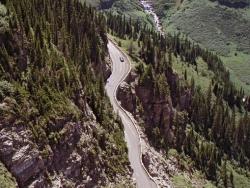
Considered one of the world's most scenic mountain drives, the two-lane Going-To-The-Sun Road through Glacier National Park was the first major road to be constructed directly over high mountain terrain, proving that roads did not need to be limited to mountain passes.
Glacier National…
Read More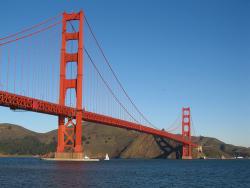
Put in service in 1937, this world-renowned bridge, conceived by Joseph Strauss and designed largely by Charles Ellis, was the longest single span (4,200 feet) in the world for a quarter century.
As with many civil engineering projects in their conceptual stages, naysayers scoffed at the…
Read More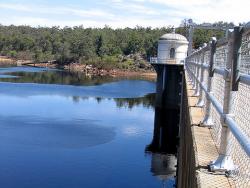
Originally known as the Coolgardie Goldfields Water Supply Scheme, the Goldfields Water Supply, Western Australia, has exceptional and unique cultural significance for Australia. Western Australia's first Premier, the dynamic and visionary Sir John Forrest, recognized the need for this…
Read More
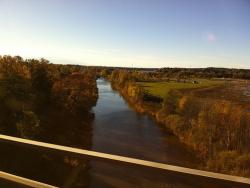
The Gota Canal is the biggest infrastructure project ever built in Sweden. The canal was dug by hand with shovels made of wood. It took over 22 years of 12-hour days - an estimated 12 million man-days of labor - to complete the project.
The Gota (pronounced yeu-ta) Canal is a 347-…
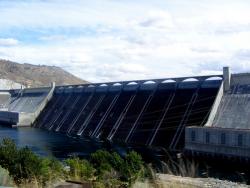
The massive Grand Coulee Dam, on the Columbia River, is the largest concrete structure in the U.S., the largest hydroelectric facility in the U.S., and the sixth-largest hydroelectric facility in the world. It provides irrigation for up to 1.1 million acres of agricultural lands and the…
Read More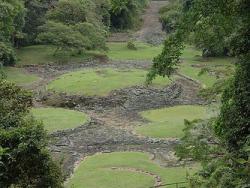
The early people of Costa Rica in the present-day area of Turrialba in Cartago Province built this ceremonial center with care and precision, and it is the country's primary and most important archaeological site. The Guayabo National Monument is of international significance because of its…
Read More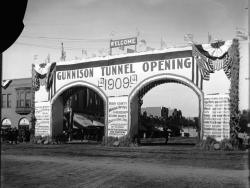
At its completion, the 5.8-mile Gunnison Tunnel under western Colorado's Vernal Mesa was the longest irrigation tunnel in America. It carried water from the Gunnison River to the Uncompahgre Valley to irrigate 146,000 acres of cropland.
Work on the 30,582-foot tunnel was first performed…
Read More
The Eiffel Tower was built for the International Exhibition of Paris of 1889 commemorating the centenary of the French Revolution. Of the 700 proposals submitted in a design competition, Gustave Eiffel's was unanimously chosen. At 300 meters and 7,000 tons, it was the world's tallest…

The church of Hagia Sophia (literally "Holy Wisdom") in Constantinople, now Istanbul, was first dedicated in 360 by Emperor Constantius, son of the city's founder, Emperor Constantine. Hagia Sophia served as the cathedra, or bishop's seat, of the city. Originally called Megale Ekklesia (Great…
Read More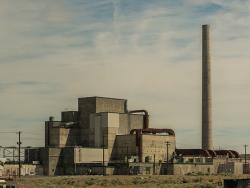
In the first nine months of operation, the B reactor produced fissionable plutonium for the world's first atomic bomb (the Trinity test on July 16, 1945), and for the atomic bomb that was dropped on Nagasaki, Japan, on August 9, 1945, killing 35,000 people. This, and similar destruction at…
Read More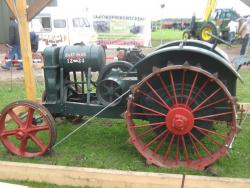
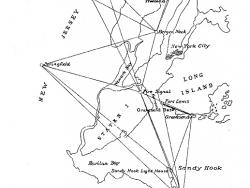
The precise system of measurements provided today by the U.S. Coast and Geodetic Survey originated with an act of Congress under the administration of Thomas Jefferson in 1807 that funded work on "an accurate chart" of America's coastal waters. Intended to aid sea-going commerce, the first…


